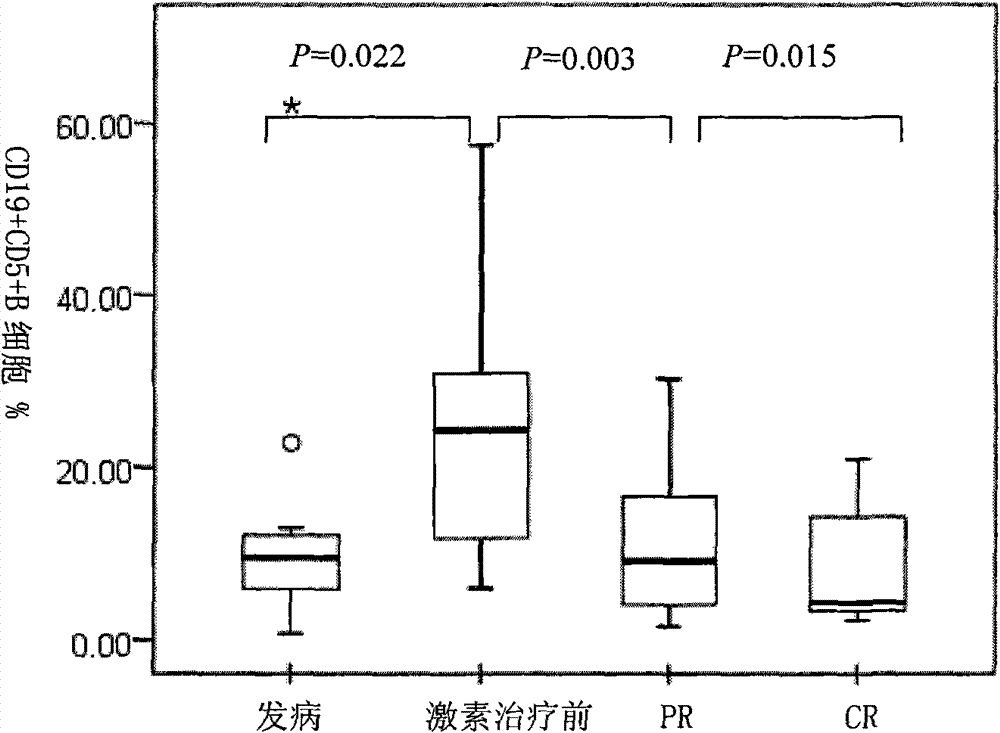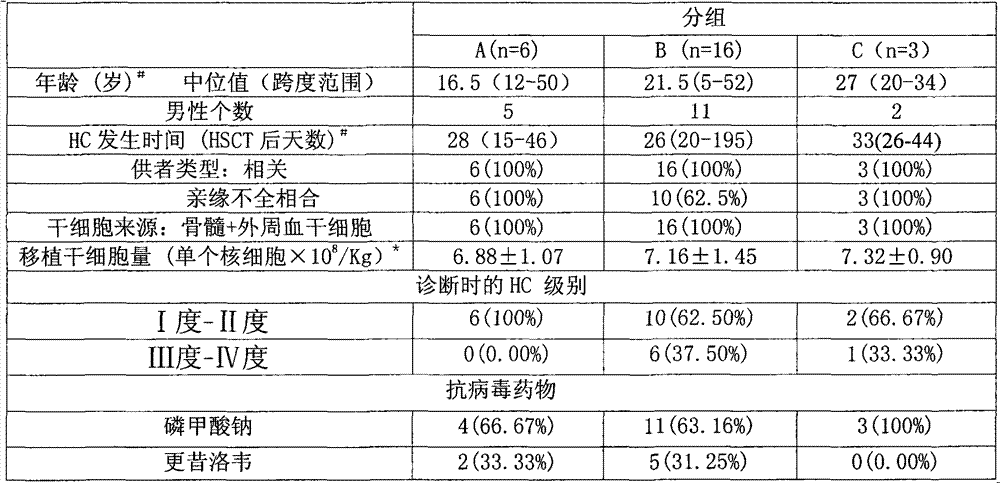Application of anti-CD19 antibody and anti-CD5 antibody
An antibody and monoclonal antibody technology, applied in the new application field of anti-CD19 antibody and anti-CD5 antibody, can solve problems such as unanimous affirmation
- Summary
- Abstract
- Description
- Claims
- Application Information
AI Technical Summary
Problems solved by technology
Method used
Image
Examples
Embodiment
[0027] Of the 25 confirmed LOHC patients, 24 were treated according to the scheduled procedures.
[0028] Since only 9 of all patients were positive for CMV in the initial etiological test, and the rest were negative, only CMV was detected in subsequent etiological tests.
[0029] 1. Antiviral treatment
[0030] Twenty-four patients received antiviral therapy (17 cases were given sodium foscarnet; 7 cases were given ganciclovir). Etiological tests were performed twice in the first week: patients who were negative twice received antiviral treatment for 10-14 days (blood CMV pathogenic tests were performed twice a week), and then the efficacy was evaluated; patients with positive results continued to receive antiviral treatment. Virus treatment (etiology detection twice a week), until the results are negative for two consecutive times, the curative effect will be evaluated.
[0031] Among the 24 patients, antiviral treatment was effective in 6 patients, and antiviral treatment...
PUM
 Login to View More
Login to View More Abstract
Description
Claims
Application Information
 Login to View More
Login to View More - R&D Engineer
- R&D Manager
- IP Professional
- Industry Leading Data Capabilities
- Powerful AI technology
- Patent DNA Extraction
Browse by: Latest US Patents, China's latest patents, Technical Efficacy Thesaurus, Application Domain, Technology Topic, Popular Technical Reports.
© 2024 PatSnap. All rights reserved.Legal|Privacy policy|Modern Slavery Act Transparency Statement|Sitemap|About US| Contact US: help@patsnap.com










